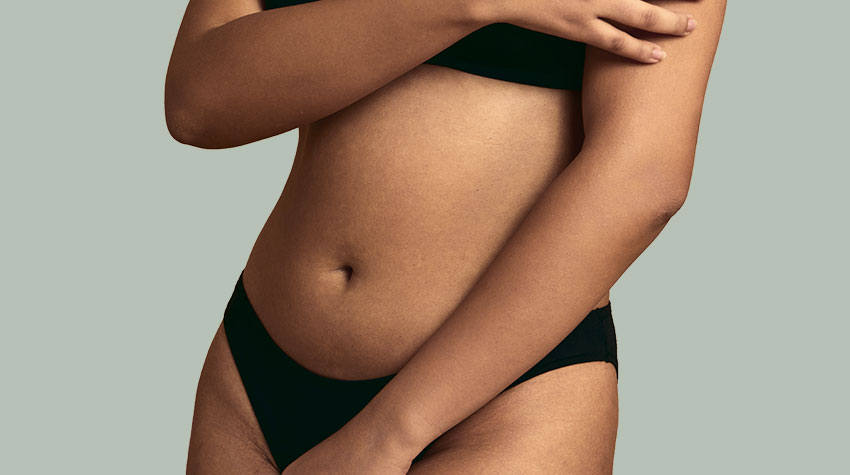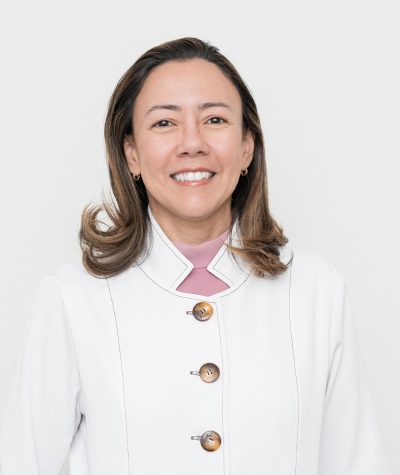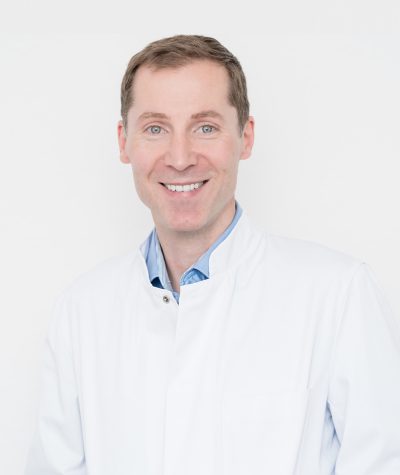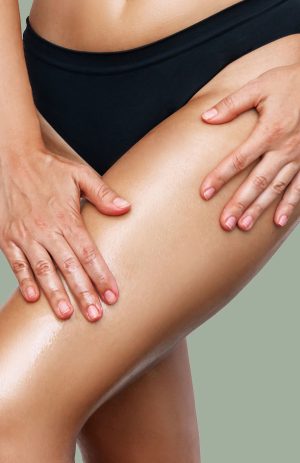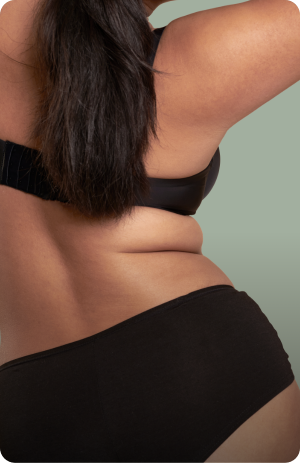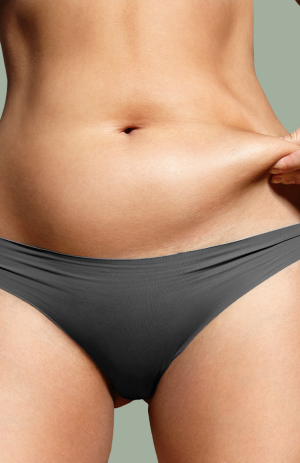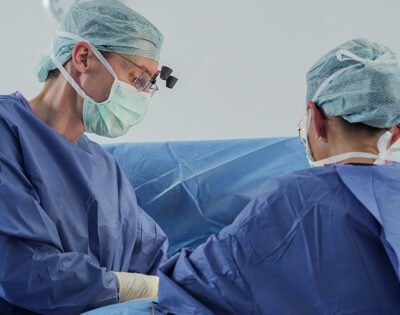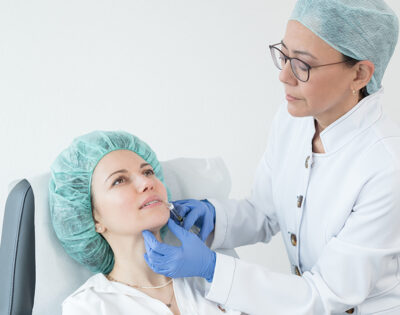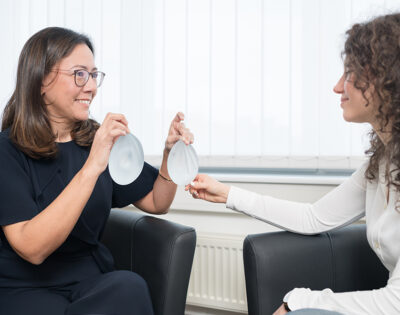Tummy tuck in Saarbrücken: Feel athletic again with a taut and slim stomach
A tummy tuck or “abdominoplasty” is a surgical technique used to remove excess skin from the abdomen. You are not alone with your wish: In Germany, this operation was performed over 24,000 times in 2019 (924,000 times worldwide). 1 Operations to enhance the contours of the abdomen were first described in 1890 2 and have been continuously developed ever since.
Opt for a body to fall in love with:
- After successfully losing weight to a firm stomach
- Enjoy bath time with a toned tummy
- Back to your dream body after pregnancy
- Dressing belly-free without any problems
What our patients say
Information at a glance
Operation duration
approx. 2-3 hours
Aftercare
6 weeks
Anesthesia
Twilight sleep
Thread tension
Self-dissolving threads
Hospitalization
Outpatient
Socially acceptable
after 2 weeks
Costs
Additions or alternatives
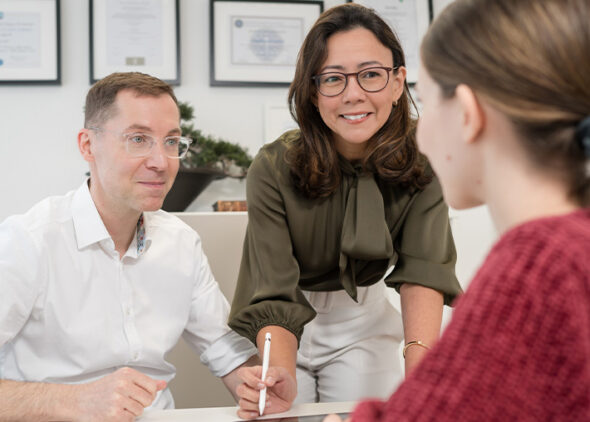
Procedure for a tummy tuck
How is a tummy tuck performed in your case?
- As a rule, the skin on the lower abdomen is sutured with self-dissolving sutures, with the exception of the navel.
- Depending on the findings, the surgeon inserts drainage tubes into the wound, which can usually be removed the next day.
- The operation time for a tummy tuck is two to three hours, depending on the extent of the procedure.
During a procedure on the abdominal wall, both fat deposits and sagging skin must be taken into account. Furthermore, a natural alignment of the straight abdominal muscles can be restored. The contours of the abdominal wall should harmonize with the waist and the mound of Venus. Certain areas can be emphasized in a special way. Knowledge of the nerve pathways is important for surgical treatment and for eliminating pain during the operation.
Tummy tuck for men: not only women are interested
You are not alone: Tummy tuck is the fourth most common cosmetic surgery in the U.S. for both women and men 3 . When men lose a lot of weight, skin folds often remain on the waistband. A tummy tuck can remove the unwanted folds. Many people want to get rid of fat deposits on their flanks at the same time. For a slim, athletic waistline, liposuction of the problem areas is performed before the lift. The fine scars are located below the waistband and can also be hidden in swimming trunks.
Methods of abdominoplasty:
You have these options

(also known as abdominoplasty, upper abdominoplasty, complete abdominoplasty or major abdominoplasty): In this surgical procedure, the skin between the lower edge of the ribcage and the pubic mound is tightened. The excess skin between the navel and the pubic mound is removed. At the same time, the large tummy tuck also removes stretch marks in the lower abdominal area. Your skin between the ribs and the navel is loosened and moved downwards. As part of this classic tummy tuck, your skin in the bikini area is closed, leaving a fine and inconspicuous horizontal scar. The navel itself is not actually moved by the cosmetic surgeon. Instead, an opening is created for the navel in the tightened skin covering above it. After all, the fine scar around the navel is barely recognizable.
(also known as mini-abdominoplasty or small abdominoplasty): In this surgical method of lower abdominoplasty, the area between the navel and the pubic mound is tightened. The wrinkled skin is removed in a spindle shape during the mini tummy tuck. After the wound has been closed, a scar remains from the mini tummy tuck, which can be compared to a very fine caesarean section scar. In comparison, it is a minor procedure.
(also known as a fleur de lis tummy tuck): This surgical technique is suitable for improving the silhouette of a sagging abdomen, also known as a fat apron. This plastic aesthetic procedure allows the skin on the abdomen to be tightened in two directions: Horizontally and vertically. The advantage of this method is that it tightens the skin very effectively and contours the waist. The excess skin is also used to remove stretch marks and any scars from previous operations. The disadvantage of the fleur de lis technique is that a vertical scar remains in the middle of your abdomen.
Before and after pictures of a tummy tuck unfortunately prohibited
In Germany, it is not legally permitted to publish before and after pictures of cosmetic surgery online. Accordingly, this also applies to the topic of abdominoplasty. However, when choosing a doctor in the field of aesthetic plastic surgery, patients naturally want to be assured of good results in advance. During the first consultation, you can view selected before and after photos without personal data. Care is taken to ensure that the initial situation and the desired result of the exemplary shots also correspond to your personal situation and your objectives. A realistic and beautiful result can be planned together with you in close consultation.
It is impossible to provide comprehensive specialist medical clarification and information without a comparative presentation. In order to fulfill the duty of disclosure pursuant to Section 630e para. 3 BGB, we therefore use simplified sketches of realistic treatment processes. Where possible, we explain the disadvantages and risks of an intervention with the greatest care and to the best of our knowledge and belief, with reference to scientifically based findings.
An almost invisible scar after a tummy tuck, how does that work?
Of course you don’t want any noticeable scars on your body. We pay particular attention to an inconspicuous scar after a tummy tuck. With special precautions, certain technical refinements and regular aftercare, all the conditions for optimal healing are met so that hardly any visible scars remain:
- We make sure that a fine line-shaped scar remains hidden within the bikini line.
- Thanks to a special suturing technique (shirring suture), the scar is several centimeters shorter than with a conventional tummy tuck.
- A special suturing technique distributes the tension to the inner connective tissue and closes the skin without any tension.
- Simultaneous liposuction not only helps you to achieve more beautiful contours, it also reduces tension and protects the skin’s circulation – two important prerequisites for good healing.
- We suture the wound with very fine sutures in the subcutaneous area so as not to damage the surface of your skin.
- With microsurgical precision and optical magnification, the treating physician adjusts the skin layers very precisely to each other.
- The shaping of an elongated belly button a few millimetres deep leaves only a small scar in your belly button, which is barely visible afterwards.
- We inform and advise our patients on when and how you can best support scar healing and what you should pay attention to.
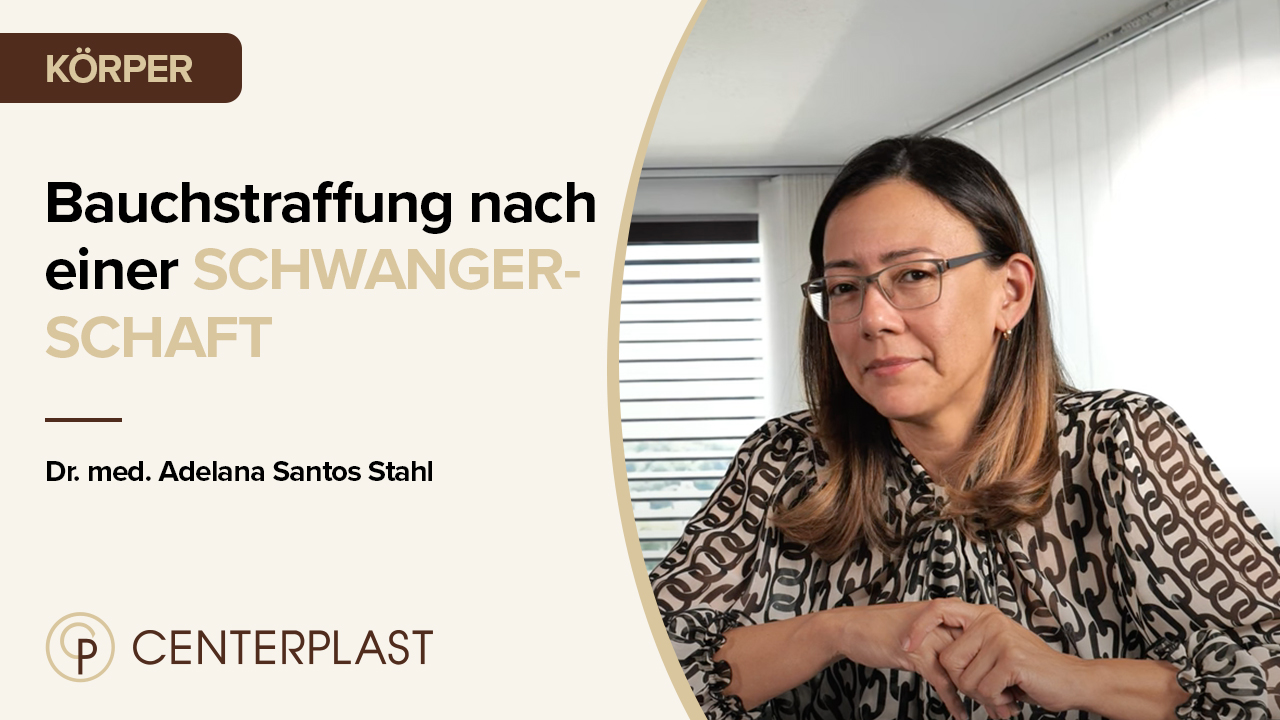
What could financing a tummy tuck look like for you?
Have you already calculated the price of a tummy tuck and would like to have your cosmetic surgery financed? On our page about loans for cosmetic surgery, we explain all the points and give you further tips. Of course, we will also be happy to advise you on the subject of financing your tummy tuck at CenterPlast during our consultation hours.
The experiences of our patients after a tummy tuck
Many patients who have undergone a tummy tuck at CenterPlast because of their desire for a flatter stomach have agreed to share their experiences with other patients. You can find testimonials and patient testimonials about their tummy tucks on the well-known medical review portals and in Google reviews.
On our testimonials page you can make sure that you are with the right doctor for your tummy tuck. There you will find bundled ratings, detailed reports and further information.
FAQ – Frequently asked questions
A slim waist is generally perceived as particularly attractive 4 . In countries with tropical weather like Brazil, unflattering body contours cannot be concealed under several layers of clothing. These circumstances, coupled with the skill and creativity of Brazilian surgeons, may explain why most tummy tuck techniques have been described by Brazilian plastic surgeons:
Saldanha Oswaldo Ribeiro has popularized a technique in which the waist is contoured through extensive liposuction, especially in areas where fat cannot be removed. Another representative of plastic surgery from Brazil, Avelar Juarez Moraes, has described several scar-saving techniques for a taut abdomen to leave very inconspicuous scars that can be easily hidden in the bikini line. Ricardo Baroudi has developed a special suturing technique to reduce complications (accumulation of wound water, wide scars).
Brazilian plastic surgeons pay particular attention to harmonizing the adjacent regions of the body, for example by tightening the mons veneris or treating the breast with autologous fat, to achieve an optimal final result.
The difference between twilight sleep and general anesthesia is the artificial respiration. Nowadays, paralysis of the respiratory muscles, as caused by general anesthesia, is no longer a prerequisite for pain-free surgery. Pain elimination techniques have developed enormously. Thanks to the precisely dosed administration of sleeping pills and painkillers, a tummy tuck by a specialist can also be performed comfortably and safely in twilight sleep 5 . The targeted anesthesia of the skin nerves in the abdomen ensures that you feel less pain even after the operation 6 . As of 2021, over 15 scientific studies have been published confirming the comfort and safety of targeted anesthesia of the abdominal wall nerves before, during or after a tummy tuck 7 . The advantages of twilight sleep with targeted nerve anesthesia are:
- You will be awake and fit again more quickly after an operation 8 9 .
- You need less strong painkillers.
- No inpatient stay is necessary after an operation in twilight sleep: You do not have to stay overnight in the hospital or clinic.
- The risk of a blood clot interrupting the blood flow in the leg (thrombosis) or lungs (embolism) is lower with twilight sleep than with a general anesthetic 10 .
The paired straight abdominal muscles run from the lower edge of the ribs to the pubic bone. In the midline, the muscles are connected by a white strip of collagen fibers (Latin name: linea alba). During pregnancy, the growing child stretches the abdominal wall. After several pregnancies in particular, the connective tissue between the straight abdominal muscles can be stretched from one to two centimeters to over five centimeters. As the collagen tissue is inelastic, the gap does not disappear after pregnancy. As a result, the straight abdominal muscles take on a curved shape. The altered direction is suspected of promoting back pain 11 . With a tummy tuck, the muscles can be moved back to their original position in the middle of the abdomen. There is evidence that correction of rectus diastasis improves the strength of the straight abdominal muscles and back pain.12
It goes without saying that the cost of a tummy tuck is one of the most frequently asked questions. To find out the price of a tummy tuck in just a few clicks, you can use our price calculator.
Due to the constant increase in the child’s size, the skin cells multiply and the skin covering on the stomach increases. If cell proliferation cannot keep pace with the increase in circumference, the skin can tear internally. Stretch marks form. The skin’s ability to adapt decreases with age. Cigarette smoking and frequent sunbathing also damage skin elasticity. If the skin does not regress sufficiently, the sagging skin forms folds around the navel or above the caesarean scar. Scientific studies show that fat deposits inside the abdomen around the intestines increase after pregnancy 13 . Rectus diastasis also leads to an increase in the circumference of the abdomen. The shape and color of the belly button can also change unfavorably during pregnancy. A redistribution or increase in fatty tissue often also affects the mons pubis, back and waist.
A birth is accompanied by many changes. The abdomen and breasts are the areas of the body that change the most during pregnancy. The skin on the areolas, the pubic area, the armpits and around the navel (linea nigra in Latin) can become darker in color. After birth, the body’s metabolism and hormonal balance changes. Many changes that occur during pregnancy disappear again after the birth. The dark discoloration of the skin fades after a few months. The collagen of the stretched skin is remodeled. The metabolic processes of the skin are comparable to those of a healing scar. Women who have given birth by caesarean section notice that the scar appears reddened and somewhat hardened in the first few months. After six months, the scar becomes paler and softer. Metabolic processes that lead to the regression of the skin are similar to the remodeling processes of a scar. In the first nine months, the skin may recede slightly. For this reason, we recommend that you wait until after the birth before undergoing a tummy tuck. As every operation is accompanied by the administration of medication, you should have weaned your child by then. A life-changing procedure such as a tummy tuck should be performed under the best possible circumstances. Bear in mind that you should avoid heavy lifting and carrying for the first four to six weeks after the operation. Therefore, make sure that you can get support from your family, friends or colleagues in the first few weeks.
When you can return to work after a tummy tuck depends largely on the extent of the operation and the demands of your job. On average, our patients go back to work after one to three weeks. After a mini-abdominoplasty, young and healthy patients can return to work from home after just a few days. If your job requires you to lift or carry heavy loads frequently and for long periods, you should allow a recovery period of four to six weeks after correction of a rectus diastasis.
| Wash myself (with shower plaster): | On the first day |
| Dressing and undressing: | On the first day |
| Walking in the house / apartment: | On the first day |
| Climbing stairs (1 floor): | On the second day |
| Walking outdoors (10 minutes): | On the second day |
| Cooking (a small meal for myself): | On the second day |
| Housework (laundry, vacuuming the floor): | After one week |
| Do the shopping (groceries): | After four to five days |
| Drive a car (up to 50 km): | After four to five days |
| Sexual intercourse: | After two to three weeks |
| Sport (one hour of light fitness training): | After four weeks* |
| Endurance training (cardio training): | After six weeks |
Table: Time frame for permitted activities after a tummy tuck
*If a rectus diastasis has been treated, sports activities involving abdominal muscle training should be avoided for at least three months.
The figures are for guidance only. Depending on the general
Depending on the patient’s state of health or the extent of the tummy tuck, the information on physical stress may vary, so that deviations may occur. Always listen to your specialist’s instructions in order to prevent possible complications and not jeopardize an optimal result.
- After the operation, we want to make sure that you are completely healed and satisfied. We therefore also arrange follow-up appointments with the surgeon, which can take place via video consultation in individual cases.
- Drains are not required for every tummy tuck. If an increased tendency to bleed is detected, drains are used, which are usually removed the next day.
- You can shower as usual on the first day after the operation. It is best to use shower plasters to keep the bandages dry. It is recommended to take the first shower shortly before the follow-up appointment so that the bandages can be changed afterwards.
- The wound in the bikini area is sutured with fine stitches that dissolve by themselves. The sutures are only removed from the navel between the tenth and fourteenth day after the operation.
- During the first two weeks, make sure that your hips are slightly flexed (lying on your side with your legs drawn up or lying on your back in a stepped bed). This relieves the abdominal wall and supports healing.
- The compression garment supports decongestion. If a rectus diastasis has been corrected, the girdle protects the sutured straight abdominal muscles like an abdominal belt. We recommend that you wear the compression garment day and night for the first six weeks.
- Scar healing begins immediately after the operation. Your surgeon lays the foundations for fine and inconspicuous scar healing. Scar massages and the application of silicone patches can play a significant role in the healing process in the weeks and months that follow. Avoid sunbathing while the scar is healing so that the scar does not become discolored.
- The decongestant effect of arnica, bromelain or combination preparations such as Wobenzym has not been proven by scientific studies.14
We recommend a tummy tuck to improve the appearance of the abdomen.
Abdominal contours. The physical requirements must be taken into account: A tummy tuck is particularly suitable for healthy women or men who suffer from an increased accumulation of fat and skin folds on the abdomen.
You should have reached your desired weight before a tummy tuck. Weight fluctuations can affect the final result. If you gain weight, your abdominal girth will increase even after a tightening. However, it is not the case that the liposuctioned fatty tissue forms anew. There is also fatty tissue in the abdomen, around the intestines, which increases in volume when weight is gained.
Conversely, significant weight loss after a tummy tuck can also have a negative effect on the results of the operation.
As being overweight increases the general potential risks of surgery such as thrombosis, embolism and wound healing disorders, we advise against a tummy tuck if you have a BMI of over 40.
A tummy tuck should be performed under the best possible circumstances. Of course, this applies to the operation, which is meticulously prepared by our entire surgical team.
The time after the operation also requires a certain amount of preparation. Avoid binding appointments during your recovery phase. A perfectly performed operation will not lead to an optimal result if recovery or post-operative care is not guaranteed.
Occasionally people ask about the best time of year for a tummy tuck. The time of year has no influence on the operation or healing. During aftercare, you should above all be able to rest. A compression girdle should be worn for four to six weeks. The special fit and the light and breathable fabric of the bodices are generally not perceived as uncomfortable. At any time of year, it is of course advisable to adapt to the weather with appropriate clothing and air conditioning to avoid freezing or sweating after the operation.
Immediately after the removal of excess skin, the abdomen is already firmer and the contours are slimmer, so you will see a difference within the first few days. Healing is an ongoing process. The following picture should give you an impression of the healing process:
| Operation day | Depending on the extent and state of your health, you can stay overnight at home. |
| Day 1 | Inspecting the wound, checking that the bodice is correctly positioned and renewing the dressing. After liposuction, the dressings absorb the fluid from the tissue injection for the first 24 hours. |
| Day 3 | On-site inspection of the wound and renewal of the dressing. Naturally, there will be slight swelling in the surgical area. |
| Day 6 | On-site visit or video consultation. Occasionally, bruises are now more visible as the blood spreads through the tissue and follows the force of gravity. |
| Day 10 | On-site inspection of the wound and renewal of the dressing. |
| Day 13 | Removal of the fine stitches from the navel and instructions for scar care. Due to the breakdown of the blood pigment hemoglobin, the bruises are now orange-yellow. The color changes from purple to green to yellow. |
| Day 41 | On-site visit or video consultation. As a rule, there is already a clear reduction in swelling. You no longer need to wear the girdle. It is quite normal for your stomach to still feel a little numb. |
| 90th day | On-site visit or video consultation. In 90 percent of patients, the final result is 90 percent recognizable. |
| 180. Day | On-site visit or video consultation. The scars slowly become a little softer and paler. The more regularly and consistently you care for your scars, the faster and better they will heal. |
| 360. Day | On-site visit. Approximately one year after the operation, it can be assumed that the tissue will no longer change. This is the best way to compare and evaluate the before and after pictures. |
Table: Development of the result of a tummy tuck
As so often, the answer to this question is: it depends! A body mass index of 25 kilograms per square meter or more is considered overweight. The question about body weight is used to assess the surgical risks. There are a large number of factors that influence the risks of an operation. The interaction of these factors means that each patient must be considered individually and as a whole.
The increase in surgical risks due to a reduced state of health and the extent of an operation is scientifically well documented. The characteristics that influence the state of health include: Age, body weight, cigarette smoking and comorbidities. The extent and duration of an operation are determined by the dimensions of the abdomen and the aims of the operation.
A risk is usually expressed as a percentage. A risk cannot be described in terms of “never” or “always”. Cigarette smoking is a risk. Smoking twenty cigarettes a day is more harmful than smoking one cigarette a day. Even if you only smoke one cigarette a day, your life is more dangerous than that of a non-smoker.
In young, healthy non-smokers, body weight therefore plays a subordinate role. Nevertheless, we advise against a tummy tuck if your BMI is over 40.
Ideally, a tummy tuck should be performed after family planning has been completed. Nevertheless, there are no disadvantages to be feared in a pregnancy after a tummy tuck, neither for the expectant mother nor for the growing child 15 16 . An abdominoplasty is also no obstacle to a natural birth 17 . Before becoming pregnant, we recommend waiting one year after abdominoplasty.
The costs of a tummy tuck are only covered by health insurance in exceptional cases. The German Social Code stipulates that health insurance benefits must not exceed what is necessary. This requirement applies to both private and statutory health insurance companies.
For example, it is medically necessary to remove skin folds in the case of recurring skin inflammation after all non-surgical treatment options have been exhausted. The removal of a disfiguring fat apron, which constantly attracts a lot of attention, is also considered medically necessary. If a mental impairment is diagnosed, the Medical Service of the Health Insurance Funds (MDK) generally recommends mental health treatment, but not surgery. Health insurance benefits are limited to what is medically necessary.
Justifiably high expectations of cosmetic surgery cannot be reconciled with the aims of medically necessary treatment. The costs of a tummy tuck must be applied for by the insured person.
A tummy tuck removes excess fatty tissue and skin. As the tissue does not regenerate, the result lasts a lifetime. Nevertheless, the abdominal circumference can change again after a tightening operation in the event of pregnancy or weight gain.
The fatty tissue around the abdominal organs, also known as visceral fat, can increase with a lack of exercise and an incorrect diet and lead to an increase in circumference. Therefore, make sure you eat a balanced and healthy diet and get enough exercise.
Your goals must be precisely defined before treatment, as each treatment method has different objectives. A tummy tuck serves to tighten the abdominal skin. Liposuction reduces the volume of fat and improves the contours of the body. A protruding abdomen is usually characterized by both an increase in fatty tissue and excess skin.
We therefore generally recommend combining a tummy tuck with liposuction. With a pot belly, the excess skin is in the foreground. A globular abdomen, on the other hand, is often characterized by an increase in fatty tissue and occasionally a rectus diastasis.
Every treatment is associated with opportunities but also risks. The probability of risks changes with the patient’s state of health and the extent of the operation. Your safety and satisfaction are our top priority. To keep the risks as low as possible, cigarette smoking should be avoided before and after an operation. To reduce the risk of thrombosis, you should temporarily stop taking the contraceptive pill.
The rate of complications requiring treatment at
Abdominoplasty is roughly estimated at four percent
18
. To the general
Surgical risks include inflammation, secondary bleeding, thrombosis and embolism. Dietary supplements (omega-3 fatty acids, St. John’s wort preparations, etc.) and vitamin preparations (A, E) can impair blood clotting and increase the risk of post-operative bleeding. We therefore recommend that you stop taking certain food supplements four weeks before
of a tummy tuck.
Specific complications of a tummy tuck are usually a temporary feeling of numbness, an accumulation of wound fluid and the formation of skin peaks. Careful planning and preparation as well as regular follow-up care are important in order to prevent, recognize and treat any complications in rare cases.
Yes, in principle cosmetic surgery can be combined on different parts of the body. The simultaneous performance of abdominal and breast surgery is known in the USA as a “mommy makeover”. We recommend a combination of different surgical procedures
must be carefully weighed up: When sitting or lying down, the blood flow velocity in the body vessels is reduced.
There is therefore a risk of blood clots forming in the leg veins when traveling by plane, for example. As expected, the risk of thrombosis is greater on long-haul flights than on short-haul flights. It is therefore not surprising that an operation that lasts an hour, for example, generally requires less time.
risks than an operation that takes 8 hours.
Scientific studies have been able to prove this connection and recommend that the duration of the operation should not exceed six hours 19 20 .
Almost 27 percent of tummy tucks are performed between the ages of 51 and 64. 21 Many actively shape their transition into retirement and would like to further expand their social participation. Through a healthy lifestyle and physical activity, the biological age can be many years younger than the chronological age.
If you are physically fit, you don’t need to restrict your leisure activities. Even in late adulthood, you can still climb mountains. This also applies to cosmetic surgery.

AUTHOR
Dr. Stéphane Stahl
We provide you with extensive expert knowledge in order to select the best possible treatment path together with you.
Privatdozent Dr. med. Stéphane Stahl is the former Director of the Clinic for Plastic, Reconstructive and Aesthetic Surgery / Hand Surgery at Lüdenscheid Hospital. Dr. Stahl studied medicine at the Universities of Freiburg and Berlin.
He passed the European specialist examination for plastic and aesthetic surgery in 2011 and the German specialist examination in 2012. This was followed by further specialist qualifications and additional qualifications (including quality management, medical didactics, physical therapy, emergency medicine, laser protection officer, hand surgery) as well as prizes and awards.
In 2015, he completed his habilitation in plastic and aesthetic surgery in Tübingen. He is an experienced microsurgeon, sought-after expert witness and regular speaker at specialist congresses. Following a multi-stage selection process, Stéphane Stahl became a member of the American Society for Aesthetic Plastic Surgery (ASAPS), one of the world’s largest and most influential specialist societies for aesthetic surgery.
His authorship includes numerous articles in prestigious peer review journals and standard surgical textbooks.
- ISAPS International Survey 2019 ↩︎
- Demars M. In: Voloir P, ed. Opérations plastiques sous-aponévrotiques sur la paroi abdominale anterieure. Thèse, Paris, France; 1960 ↩︎
- ASAPS Statistics 2019 ↩︎
- Lassek W. D., Gaulin S. J. C., 2016, Evol. Psychol. ↩︎
- Kryger Z.B., Fine N.A., Mustoe T.A., 2004, Plast. Reconstr. Surg. ↩︎
- Michaels B.M., Eko F.N., 2009, Plast. Reconstr. Surg. ↩︎
- Vonu P.M., Campbell P., Prince N., Mast B.A., 2020, Aesthet Surg J. ↩︎
- Byrd H.S., Barton F.E., Orenstein H.H., et al., 2003, Plast Reconstr Surg. 2003 ↩︎
- Bitar G., Mullis W., Jacobs W., et al., 2003. Plast Reconstr Surg ↩︎
- Reinisch J.F., Bresnick S.D., Walker J.W., Rosso R.F., 2001, Plast Reconstr Surg. ↩︎
- Benjamin D.R., Frawley H.C., Shields N., et al., 2019, Physiotherapy ↩︎
- Emanuelsson P., Gunnarsson U., Dahlstrand U., et al., 2016, Surgery ↩︎
- Blaudeau T.E., Hunter G.R., Sirikul B., 2006, Int J Obes Lond ↩︎
- Ho D., Jagdeo J., Waldorf H.A., 2016 .Dermatol Surg. ↩︎
- Borman H., 2002, Plast Reconstr Surg. ↩︎
- Nahas F.X., 2002, Aesthetic Plast. Surg. ↩︎
- Pajula S, et al., 2021, J Plast Reconstr Aesthet Surg. ↩︎
- Winocour J., et al., 2015, Plast Reconstr Surg. ↩︎
- Kraft C.T., Janis J.E., 2020, Clin Plast Surg. ↩︎
- Vasilakis V., Lisiecki J.L., Kortesis B.G., et all, 2021, Aesthet Surg J. ↩︎
- ASAPS Statistics 2019 ↩︎
You might also be interested in
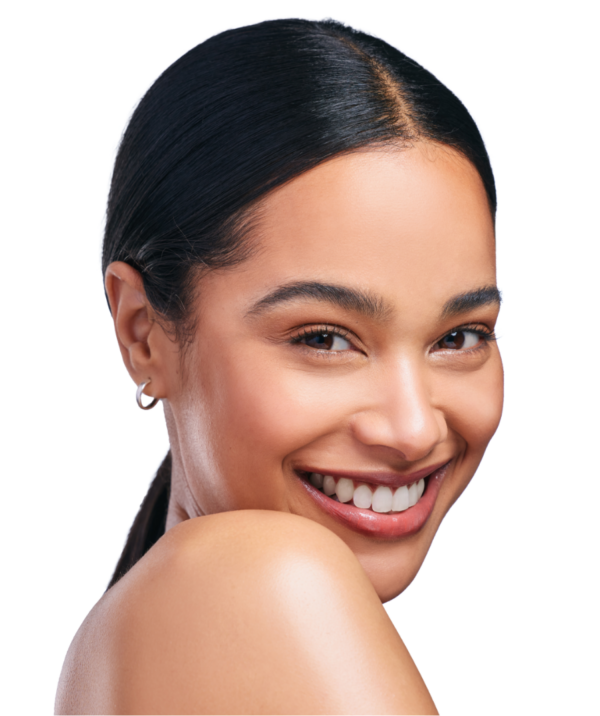
Personal advice
We take time for you and offer you customized advice and treatment for your individual result.
